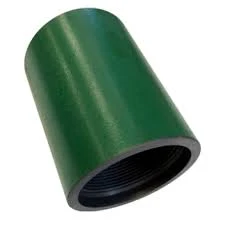- Afrikaans
- Albanian
- Amharic
- Arabic
- Armenian
- Azerbaijani
- Basque
- Belarusian
- Bengali
- Bosnian
- Bulgarian
- Catalan
- Cebuano
- Corsican
- Croatian
- Czech
- Danish
- Dutch
- English
- Esperanto
- Estonian
- Finnish
- French
- Frisian
- Galician
- Georgian
- German
- Greek
- Gujarati
- Haitian Creole
- hausa
- hawaiian
- Hebrew
- Hindi
- Miao
- Hungarian
- Icelandic
- igbo
- Indonesian
- irish
- Italian
- Japanese
- Javanese
- Kannada
- kazakh
- Khmer
- Rwandese
- Korean
- Kurdish
- Kyrgyz
- Lao
- Latin
- Latvian
- Lithuanian
- Luxembourgish
- Macedonian
- Malgashi
- Malay
- Malayalam
- Maltese
- Maori
- Marathi
- Mongolian
- Myanmar
- Nepali
- Norwegian
- Norwegian
- Occitan
- Pashto
- Persian
- Polish
- Portuguese
- Punjabi
- Romanian
- Russian
- Samoan
- Scottish Gaelic
- Serbian
- Sesotho
- Shona
- Sindhi
- Sinhala
- Slovak
- Slovenian
- Somali
- Spanish
- Sundanese
- Swahili
- Swedish
- Tagalog
- Tajik
- Tamil
- Tatar
- Telugu
- Thai
- Turkish
- Turkmen
- Ukrainian
- Urdu
- Uighur
- Uzbek
- Vietnamese
- Welsh
- Bantu
- Yiddish
- Yoruba
- Zulu
Understanding the Role of Pump Seating Nipple in Fluid Transfer Systems
Understanding Pump Seating Nipples in Oil and Gas Operations
In the oil and gas industry, the efficiency and reliability of equipment are paramount for successful operations. Among the various components used in pumping systems, the pump seating nipple plays a crucial role. This article delves into the significance, design, and functionality of pump seating nipples, shedding light on their importance in ensuring optimal performance in well completions.
What is a Pump Seating Nipple?
A pump seating nipple is a specialized fitting designed to provide a secure and stable interface for downhole pumps in oil and gas wells. Typically made from durable materials such as steel or aluminum, these nipples are installed in the wellbore as part of the completion assembly. The primary function of a pump seating nipple is to support the weight of the pump and facilitate its operation in challenging downhole conditions.
Design Features and Variants
Pump seating nipples come in various designs and sizes, tailored to accommodate different well configurations and pump types. Key design features include
2. Profile Design The profile of the nipple often features a tapered or rounded design, which allows for easier insertion and alignment of the pump into the well. This also aids in preventing wear on the pump itself during installation and operation.
3. Seal Mechanisms Effective sealing is critical to prevent the ingress of formation fluids into the pumping system. Pump seating nipples are designed with specific sealing mechanisms, such as O-rings or lip seals, to ensure a secure barrier, which is essential for maintaining pressure and preventing leaks.
pump seating nipple

4. Integrated Features Some pump seating nipples come with integrated features such as latch mechanisms, which allow for easy retrieval and installation of the pump without requiring complex tools or additional equipment.
Importance in Oil and Gas Operations
The significance of pump seating nipples in oil and gas operations cannot be overstated. Here are a few reasons why they are integral to successfully managing well output
1. Support and Stability Pump seating nipples provide essential support for downhole pumps, ensuring they remain in the correct position and can efficiently draw fluids from the reservoir. This stability is crucial in maintaining the operational performance of the pump.
2. Enhancing Flow Efficiency By providing a well-defined seating area for the pump, these nipples help in optimizing flow rates. This means that more hydrocarbons can be extracted from the reservoir in a shorter time, thus improving overall operational efficiency and productivity.
3. Facilitating Maintenance The design of pump seating nipples allows for easier access to the pump, facilitating maintenance and troubleshooting. This can significantly reduce downtime and operational costs associated with pump failures or service needs.
4. Preventing Contamination A well-sealed pump seating nipple prevents unwanted formation fluids from entering the pump system, which is essential for protecting the pump components and ensuring longevity. This is particularly important in environments where the presence of water, sand, or hydrocarbons could damage the equipment.
Conclusion
In conclusion, pump seating nipples are pivotal components in the realm of oil and gas extraction. Their design, functionality, and integral role in supporting downhole pumps contribute significantly to the safety, efficiency, and productivity of oil and gas operations. As technology continues to evolve, so too will the designs of these fittings, enhancing their performance and adaptability in increasingly demanding environments. Understanding and selecting the appropriate pump seating nipple can lead to more effective well completions, minimizing operational risks and maximizing hydrocarbon recovery. For industry professionals, a keen awareness of these components is essential in ensuring the overall success and sustainability of their operations.
-
Tubing Pup Joints: Essential Components for Oil and Gas OperationsNewsJul.10,2025
-
Pup Joints: Essential Components for Reliable Drilling OperationsNewsJul.10,2025
-
Pipe Couplings: Connecting Your World EfficientlyNewsJul.10,2025
-
Mastering Oilfield Operations with Quality Tubing and CasingNewsJul.10,2025
-
High-Quality Casing Couplings for Every NeedNewsJul.10,2025
-
Boost Your Drilling Efficiency with Premium Crossover Tools & Seating NipplesNewsJul.10,2025







